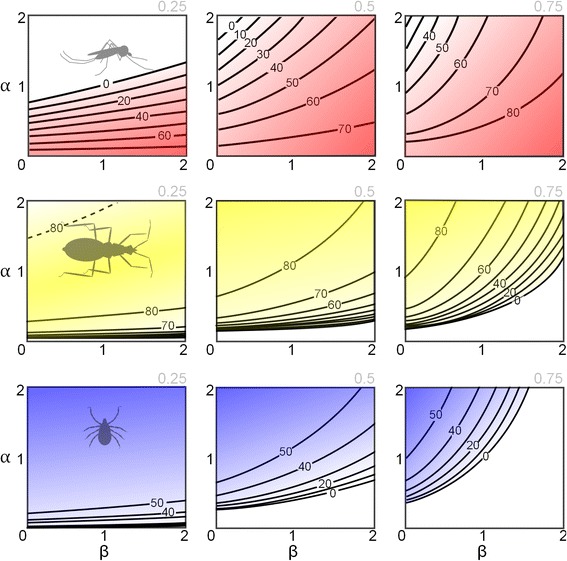Fig. 2.

Disease control efficacy is contingent on the behavioural response of biting vectors to the availability of alternative blood-hosts. The parameters α and β determine the shape of the behavioural response as described in Equation 2. The human proportion of all blood-hosts is indicated in the top-right of each plot. For Plasmodium falciparum (top row), the region above the contours corresponds with controlled transmission, but for Trypanosoma cruzi (middle row) and Borrelia burgdorferi (bottom row), the regions below the contours correspond with controlled transmission. A special case is shown in the left plot for T. cruzi whereby the high α/ low β region (above broken line) delimits a second parameter space for controlled transmission (see text). The contour labels correspond with the percentage reduction in bite rate required to achieve control. (These models are all deterministic and so a 90 % reduction in the acute infections relative to the maximum level in the absence of control is used to infer controlled transmission)
